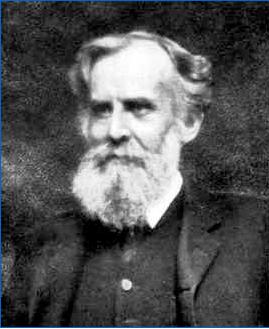John Venn
John Venn, FRS,[2][3] FSA,[4] (4 August 1834 – 4 April 1923) was an English logician and philosopher. He introduced the Venn diagram. The Venn diagram is one of many ways to represent logical relationships. It is well-known because it is easy to understand, and is used in elementary set theory, probability, logic, statistics, competition math, and computer science.
John Venn | |
|---|---|
 | |
| Born | 4 August 1834 Kingston upon Hull, Yorkshire, England |
| Died | 4 April 1923 (aged 88) Cambridge, England |
| Nationality | English |
| Alma mater | University of Cambridge |
| Awards | Fellow of the Royal Society |
| Scientific career | |
| Fields | Mathematics Logic[1] Philosophy |
| Institutions | University of Cambridge |
| Signature | |
In 1883, Venn was elected a Fellow of the Royal Society.[5] In 1884, he was awarded a Sc.D. by Cambridge.[6]
John Venn Media
Stained glass window at Gonville and Caius College, Cambridge, commemorating Venn and the Venn diagram
References
- ↑ Venn, John (July 1880). "I. On the Diagrammatic and Mechanical Representation of Propositions and Reasonings" (PDF). The London, Edinburgh, and Dublin Philosophical Magazine and Journal of Science. 5. Taylor & Francis. 10 (59): 1–18. doi:10.1080/14786448008626877. Archived (PDF) from the original on 16 May 2017.
- ↑ Anonymous (October 2003). "Venn biography". School of Mathematics and Statistics University of St Andrews, Scotland. Retrieved 3 August 2014.
- ↑ Template:Cite ODNB
- ↑ John R. Gibbins, 'Venn, John (1834–1923)', Oxford Dictionary of National Biography, Oxford University Press, 2004; online edn, May 2006 Template:Cite ODNB
- ↑ "Portrait of John Venn". Royal Society Picture Library. Royal Society. Retrieved 2 August 2018.
- ↑ Edwards, A. W. F (2009). "Statistical Methods for Evolutionary Trees". Genetics. 183 (1): 5–12. doi:10.1534/genetics.109.107847. PMC 2746166. PMID 19797062.
+{{{1}}}−{{{2}}}


